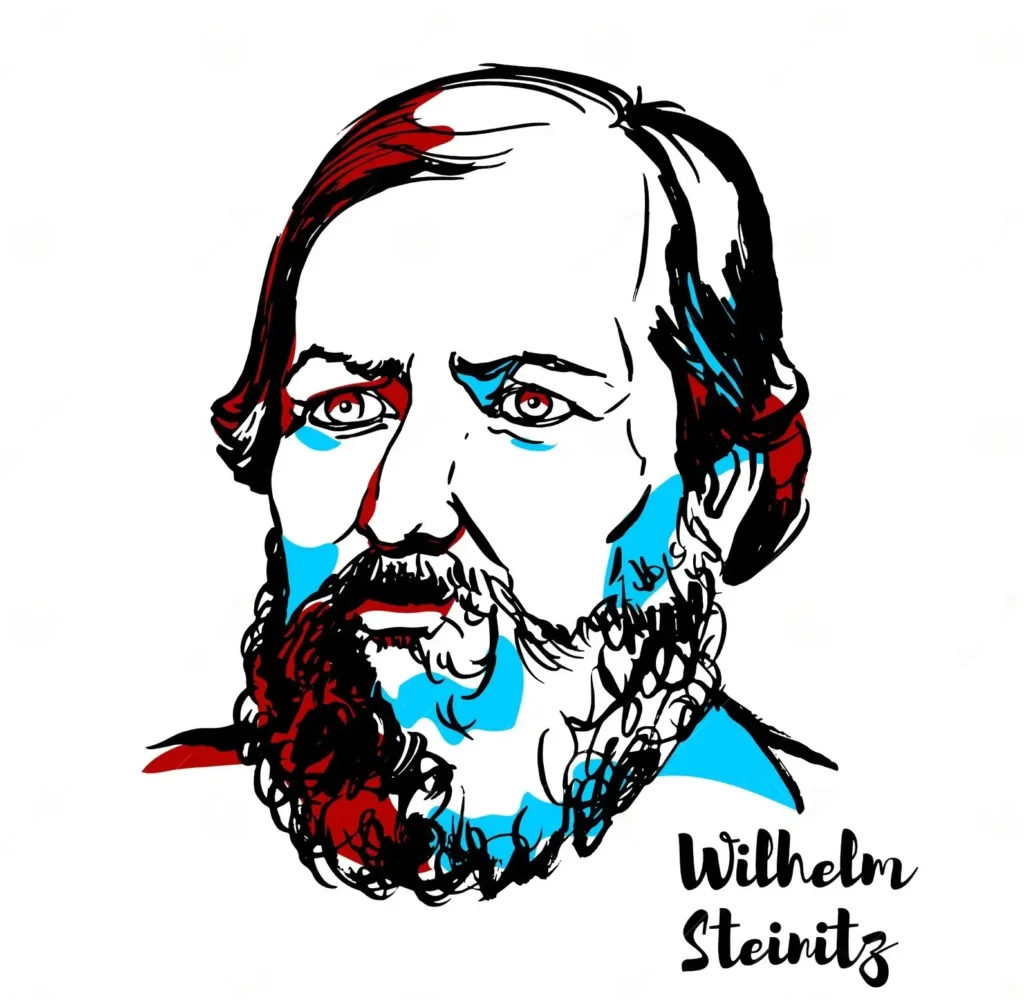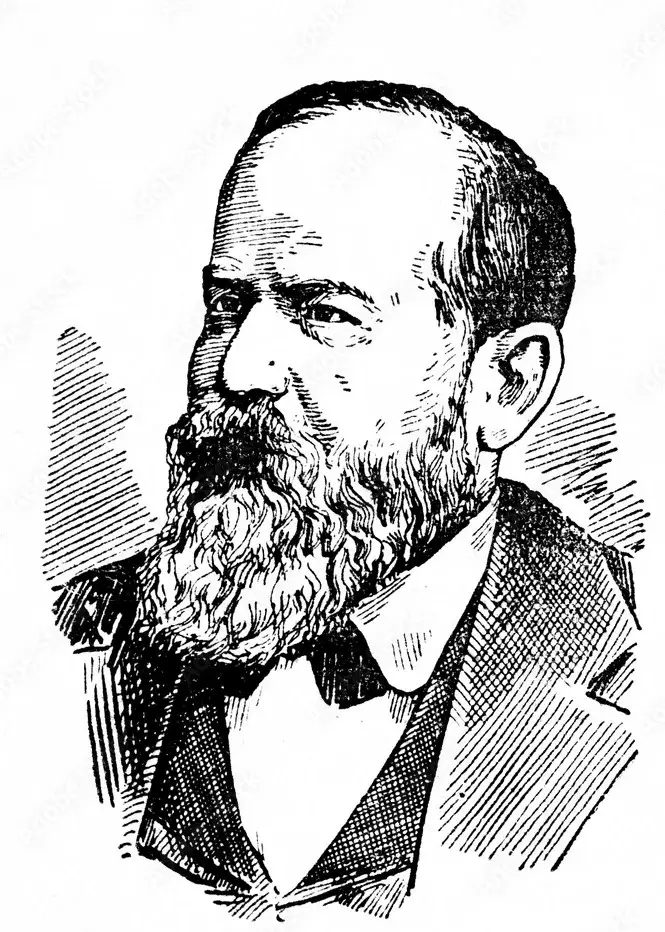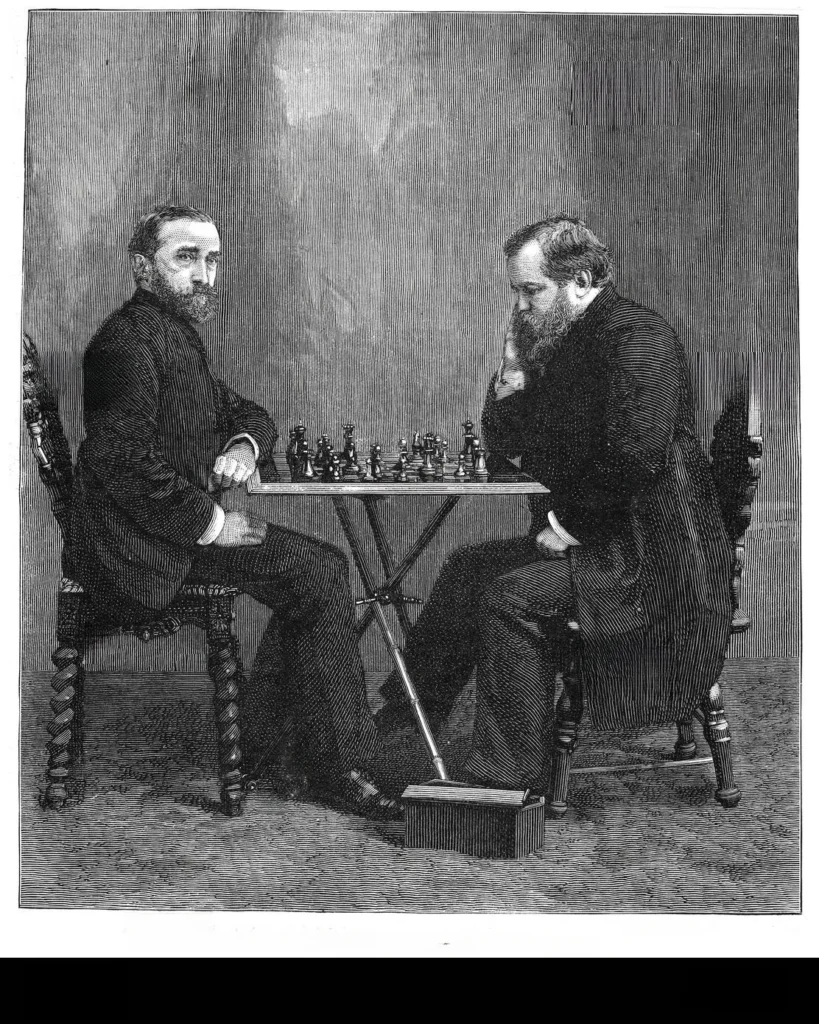Wilhelm Steinitz: The father of modern chess
17/07/2023
- The biography of Wilhelm Steinitz
- One of the best players in the history of chess
- The London tournament of 1862, the first stroke of chess player Wilhelm Steinitz
- The 1866 tournament in which Steinitz beats Anderssen, the number one on the planet
- The birth of a new style of play
- The road to the world championship
- Wilhelm Steinitz, the first world chess champion in 1886
- Last years of his career and the defeat against Lasker
- Death of Wilhelm Steinitz
This biography of Wilhelm Steinitz, the father of modern chess, will show how this Austrian chess player from the middle of the 19th century, became the hinge between the romantic chess with Paul Morphy at the head, and the modern school whose father is Steinitz himself.
Steinitz led the break between two ways of seeing the game in chess, the nineteenth-century romantic way that sought to give checkmate by playing the attack using all the pieces, and the modern way that gave priority to a positional game, in which through basic principles, small advantages were achieved that produced the victory.
The biography of Wilhelm Steinitz
One of the best players in the history of chess
The city of Prague would see the birth of one of the greatest chess geniuses, on May 14, 1836, fruit of the union between Josef Salomon Steinitz and his mother Anna Steinitz, who had 12 children.
Since his childhood, Wilhelm Steinitz excelled in his studies, becoming one of the most outstanding students in his class, particularly in mathematics, which led him in his youth to study engineering.
He studied engineering at the Vienna Polytechnic University, where he would have his first serious approach to chess, since he had learned the game from his father at the age of twelve; however, his passion would be so great that he would decide to leave his studies to dedicate himself entirely to this mental sport.

The Wiener - Schachgesellschaft school was the one that would give him the bases of professional chess, participating between 1859 and 1861 in Viennese tournaments, which would give him the opportunity to play his first professional tournament.
The London tournament of 1862, the first stroke of chess player Wilhelm Steinitz
The fame acquired in Vienna would make him known as the "Murphy of Vienna", executing an attacking game that stood out for its beauty, which was seen as pure poetry on a chessboard.
In this first international tournament he would come in sixth place, however, the majesty of the beauty of his game was recognized by the tournament, awarding him the prize for the most beautiful game, which he played against the Englishman Mongredien.
London would be a hinge period for Wilhelm Steinitz, who would settle in the English capital where the chess elite was, whom he would beat from 1862 to 1864 in two tournaments where he would become champion, beating Blackburne, Deacon, Mongredien and Vlentine Green, great eminences of British chess.
The 1866 tournament in which Steinitz beats Anderssen, the number one on the planet
Anderssen was considered the best player in the world, but the rise of Steinitz forced a direct confrontation between both chess masters, where the Austrian would win in a surprising way, since everybody thought Anderssen was the favorite, in a victory that reminds us of the 1960 world championship, when a young Mikhail Tal dethroned the experienced Mikhail Botvinnik.
From that year on, Steinitz would maintain a superiority in the art of chess until 1894, remaining undefeated until that year.
The birth of a new style of play
Wilhelm Steinitz had been preparing a different way of playing since the 1870s, taking the first steps in his new way of playing in the match against Zukertort, who had just beaten Adolf Anderssen in 1871, although Zukertort would be the victim of Steinitz game.

After this victory they would remain out of official competitions until 1882, although in 1876 they would return to defeat Blackburne with a categorical 7 to 0.
From 1874 Wilhelm Steinitz would be a columnist in the English chess magazine "The Field", in which he would comment and analyze the games of the great masters of his time, which would allow him, together with his sharp intelligence, to develop a unique form of play that would keep him at the highest level.
The road to the world championship
Wilhelm Steinitz return to high level competitions took place in 1882, when he competed in the Vienna tournament and won first place together with Winawer. He then traveled to the United States, which would become his new homeland, where he would also be victorious in some tournaments.
1883 would be an interesting year for Steinitz and his rivalry with Zukertort, since the latter had managed to defeat the father of modern chess in the London tournament, which made him in the eyes of the world as the best chess player of that time, however, the year 1886 would be established to determine who would be the first world chess champion.
Wilhelm Steinitz, the first world chess champion in 1886
It was stipulated that the first winner of ten games became the world chess champion, and Zukertort started in incredible form sweeping the first games, with a clear 4 to 1 in his favor.
It seemed that Zukertort would become the first champion, but this tournament would witness one of the most epic comebacks in history, such as the one that took place in the Cold War era between the American Bobby Fischer and the Soviet Boris Spassky.

After that disastrous start for the Austrian, he managed to turn the match around by overcoming 10 wins, five losses and five draws, in a score of 12.5 against 7.5, giving him the first official chess championship in history.
Wilhem Steinitz - Johannes Zukertort World Championship Match (1886)
Last years of his career and the defeat against Lasker
In 1889 the figure of an incredible Chigorin made the world champion face him in different occasions, in which the Austrian would defeat the Russian in two victories.
By 1890 he would play for the title against Gunsberg whom he defeated, managing to keep his crown also in 1892 when he disputed the world title against Chigorin; however, Steinitz's revolutionary ideas that had kept him at the top of the elite, had been studied by the younger rivals, causing the Austrian to lose his crown.
This happened in 1894 when he faced a young and almost unknown Emmanuel Lasker, who would defeat the undefeated champion with a resounding 12-6, consigning to history one of the greatest unbeaten streaks in the history of the game.
Between 1896 and 1897 he would have a revenge match against Lasker, where he would again be defeated, this being his last important participation.
Death of Wilhelm Steinitz
Wilhelm Steinitz, the father of modern chess, died on August 12, 1900, as a result of a serious mental illness that led him to end his days in a sanatorium in New York City, having episodes of madness where he claimed to play chess with God.
⭐️ If you want to know more about other articles similar to Wilhelm Steinitz: The father of modern chess you can visit our category Chess Players. We are waiting for you inside 👍


Leave a Reply